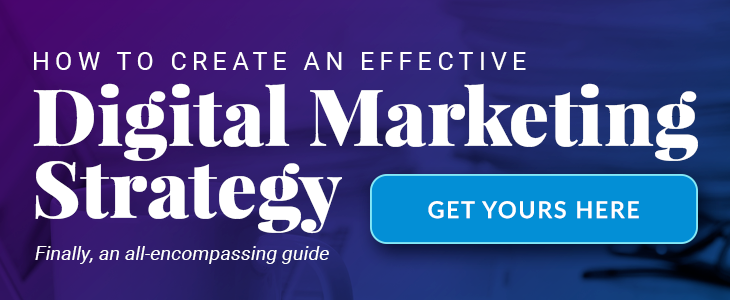
How to Find Social Media Influencers

Until about 2004, brands used film, TV and sports celebrities as brand ambassadors. But with the birth of blogging and social media, companies shifted to new type of “celebrity”—social media influencers.
Considering the relatively short history of non-celebrity influencer marketing, it’s significant that more than 83 percent of brand marketers said in 2017 that one of their top priorities is to “identify and build one-on-one relationships with industry key influencers,” according to CMO.com’s Influence 2.0: The Future of Influencer Marketing.
However, one of the key challenges to achieve this objective is finding the right influencers. Understanding the basics of finding influencers can make the process more successful. In this post, we break down the high points—including the five basic steps of influencer marketing planning, three critical considerations and four key places to find them. Then we end with a few B2B success stories for inspiration.
Planning Your Influencer Marketing
Here are five basic steps for planning an effective influencer program:
- Define your influencer campaign strategy. What do you want to achieve? What are your objectives and success measurement criteria? According to the CMO.com study, top objectives include: improve brand advocacy (94%), expand brand awareness (92%), reach targeted audiences (88%), increase share of voice (86%) and improve sales conversion (74%).
- Decide what topic you want influencers to promote. Make sure the topic matters as much to your influencers as it does to your brand.
- Find the right search tools. There are dozens of options available for influencer marketing tools that can help you identify, qualify and recruit the right influencers (see below).
- Create your ideal influencer list. You shouldn’t be looking for someone to simply hire for a single campaign. You should be investing in a relationship. Ideally, a long-lasting one that will benefit your brand, the influencer and your shared audience.
- Connect with prospective influencers. Discuss collaborating or co-creating content in a way that provides value to both your brand and the influencer.
Now, we’ll dive into step four.
Define Your Ideal Influencer
Before you can start searching for your ideal influencer, you need to know exactly who you are looking for. There are thousands of influencers, and finding the right one is critical for achieving your objectives. An ideal influencer is someone who:
- Works within your specific industry and niche.
- Is active on the same platforms your target audience uses.
- Actively creates authentic content that engages and delights your shared target audience.
- Aligns with your brand’s core values and messaging.
- Can share your brand’s message in an enthusiastic and genuine way.
- Projects the right personality type to match your business ethos.
Types of Influencers
Simply stated, an influencer is someone who, through their expertise, thought leadership or track record within a sector, has sway among a wide network of one or more audience groups. While “influencer” is the popular term, there are actually several different types of influencers to consider.
‘Brandividuals’ (aka, professional influencers): They have successfully created their own personal brands. They could be keynote speakers at industry events, published authors in your business sector or experts with a significant social media following. In all cases, they are subject matter experts who have earned influence over a specific sector by consistently publishing unique, valuable content.
Celebrities: While celebrities are more often considered for B2C marketing campaigns, some B2B brands may also find them to be the right influencer for resonating with their audiences. They could be from a variety of fields, such as the arts, sports or media (just like the old days).
Subject Matter Experts: These are experts in particular topic areas who haven’t necessarily focused their efforts on building personal brands. Academics are a good example. They lend street cred to your brand.
General Influencers: These people aren’t yet published authors or keynote speakers, but have a significant level of influence in specific occupations and niches within their industries. They’re often journalists, bloggers or senior employees at large companies.
Micro-Influencers: They have a small social following, but are likely to have a highly engaged audience. Often, an influencer with a smaller, but more engaged following is better than the inverse. To determine engagement, look at their total number of shares per article, site domain authority, retweet ratio and page authority.
Employees: Don’t underestimate the potential of your own employees to become influencers. Those who are active and well connected through social media can form a highly effective employee advocacy program to help promote your brand.
Customers: Your customers can also become your influencers. They, more than almost anyone, are likely to have authority among your target audience. Peer-to-peer communication is often the most effective. Look for customers whose voices will resonate within your sector.
3 Critical Influencer Criteria
When choosing the right influencers, it’s important to make sure they are the right fit for your campaigns. There are three widely accepted facts to consider.
Relevance. Is the influencer’s area of interest and expertise directly relevant to the topics you want to communicate to your audience? The closer you come to a direct correlation, the more powerful your influencer campaign will be.
Reach. This defines an influencer’s actual level of influence in the marketplace. Ask these questions: How big is the influencer’s reach? How large is their social following? How much does it overlap with your audience? How well known are they across the industry? What size of an audience do you need to target to accomplish your objective? Generally, influencers’ reach falls into three categories:
- Micro Influencers: 1,000 – 10,000 followers
- Power middle: 10,000 – 250,000 followers
- Macro: 250,000+ followers
Resonance. How much does the community care about what the influencer has say? Does the influencer tend to lead and shape the industry conversation?
Going big and wide for exposure may call for a macro influencer. But many brands want to home in on a more narrow and specific niche audience that actively follows and engages with a micro influencer.
4 Places You Can Find Influencers
You can find influencers in a wide variety of places. A few of the most common are at industry events and conferences, and by using social media listening tools. Here are four examples of popular ways that companies are using to find ideal influencers for their brands.
BuzzSumo. Along with other marketing functions, this tool includes a variety of features to help discover influencers. For example, using your top keywords, you can easily search for the writers, bloggers and publications in your field. You can also sort top picks by categories, such as influencers, bloggers, companies and regular users.
LinkedIn. Of course, LinkedIn is de rigueur as a B2B connectivity tool. It’s also an excellent way to find and connect with influencers in your industry. For example, enter specific keywords or phrases in search to get a list of everyone who is directly related to your niche. You can then reach out to ideal options directly within the platform to begin conversations.
Twitter. Say what you want about this social media platform, but it still holds sway with many influencers and their audiences. As a result, Twitter is a great place for many brands to find, interact and converse with their industry’s influencers. Plus, Twitter’s advanced search options, such as for trending topics and hashtags, for example, provide ways to reach influencers in your industry.
influence.co. influence.co is world’s first open platform for influencers, brands, marketers, talent managers and agencies to connect. Tools are available for finding and engaging with influencers, including searching, list creation, creating campaigns to recruit influencers, and campaign reporting. Influencers can use the online portfolio to show off their work and find their next opportunity.
3 Inspiring Influencer Success Stories
Many companies are experiencing great success at finding influencers for their brands. Here are three inspiring examples.
Cisco found influencers among IT pros. Cisco took a proactive approach toward influencer marketing and created the Cisco Champions program. It gives IT professionals a chance to talk about their expertise and showcase their knowledge of Cisco products. The company received more than 8,000 social media mentions and 55,000 tweets about its brand. The blog posts received more than 44,000 hits.
Okta found influencers among its customer base. This cloud provider leveraged its own customers for influencer marketing by getting several big names to speak about their experiences using Okta’s products. Leaders at Adobe, News Corp and 20th Century Fox, for example, shared their stories about how Okta has helped them. The testimonials were converted into blog posts and shared on Okta’s social channels, helping spread its brand name further.
Landis+Gyr found influencers among its employees. This energy management company started a pilot program called Employee Advocates to let employees who were already active on social media talk about the company. The company’s focus was on leveraging the employees’ social channels to spread the word about its values, such as customer focus and innovative spirit. One campaign yielded more than 1,500 engagements, 1,800 content shares and an estimated earned media of more than $10,800.
Clearly, influencer marketing is not only having a moment, but is here to stay. If you haven’t already started an influencer campaign, 2019 is an excellent time to leverage this rapidly expanding marketing opportunity for your brand. Hopefully, these tips on finding influencers will help you accelerate your journey to marketing success.





